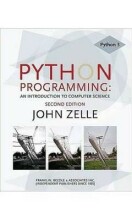Circadian rhythm
24 important questions on Circadian rhythm
What are the main conclusions of isolation experiments?
When is the circadian rhythm of a baby developed?
What is meant with a zeitgeber?
- Higher grades + faster learning
- Never study anything twice
- 100% sure, 100% understanding
Where in mammals is the information from the retina about the ambient light level processed?
Where does information in the retino-hypothalamic pathway about the light (day length) come from?
What is special about melanopsin-containing ganglion cells?
Melatonin is produced in the dark. What is the pathway that leads to this?
Melatonin also has a feedback mechanism. Describe this.
What can you say about the melatonin signal is diurnal and nocturnal animals?
What can you tell about the molecular clock?
What happens to sleep as the age changes?
Also, when you get older you lose your stage 4 sleep (and by the age of 90 you also lose your stage 3 sleep).
How can you recognize REM sleep an EEG?
What are some symptoms of sleep deprivation?
- Hallucinations
- Irritability
- Difficulty in concentrating - disorientation
What happens to the homeostatis when you go to sleep?
- Core temperature decreases
- Growth hormone increases
- Level of cortisol rises (peaks in the morning)
What does an EEG record?
What happens to the frequency when you go from waking to stage III/IV sleep?
What happens to your heart beat and respiration during non-REM and REM sleep?
REM-sleep: increase
What is meant with hemispherical sleep? What animals do this?
What are the four functions of sleep?
- Energy conservation
- Predator avoidance
- Body restoration
- Memory consolidation
What is remote-memory? When does this probably happen?
This probably happens during slow wave sleep (SWS).
What happens to sleep if there is a lesion between the spinal cord and medulla?
What happens to sleep if there is a lesion at the level of the midbrain?
What are the four different systems of the brain that are involved in active control of sleep?
- A forebrain system that by itself can display SWS
- A brainstem system that activates the forebrain into wakefulness
- A pontine system that triggers REM sleep
- A hypothalamic system that affects the brain regions above to determine whether the brain will be awake or asleep
What are hypocretin neurons?
The question on the page originate from the summary of the following study material:
- A unique study and practice tool
- Never study anything twice again
- Get the grades you hope for
- 100% sure, 100% understanding
































